方法一
1、创建证书
#cd /usr/local/nginx/conf
#openssl genrsa -des3 -out server.key 1024
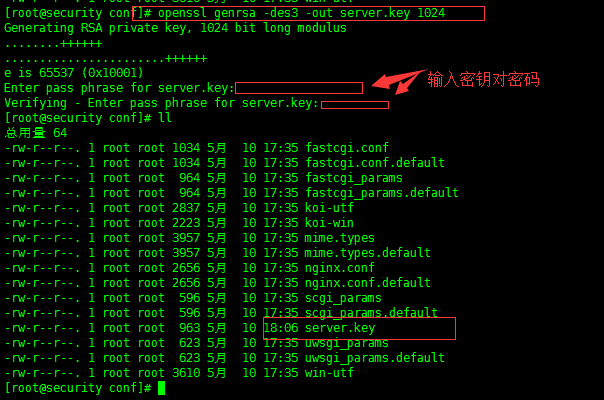
#openssl req -new -key server.key -out server.csr
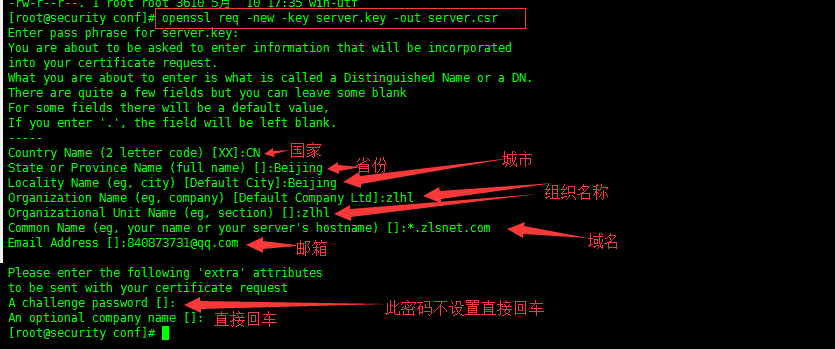
#openssl rsa -in server.key -out server_nopwd.key

#openssl x509 -req -days 365 -in server.csr -signkey server_nopwd.key -out server.crt

*******************************完成以上步骤,证书生成完成*************************************
2、配置Nginx
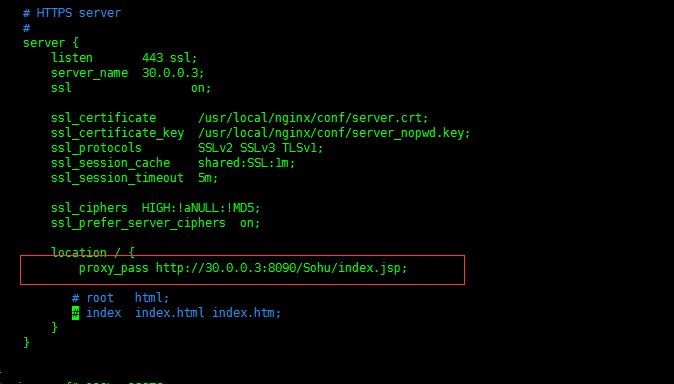
server {
listen 80;
server_name www.域名.com;
rewrite ^(.*) https://$server_name$1 permanent;
}
设置80和443走443
检测自定义配置文件的完整路径是否,并重新加载
nginx -t

3、启动Nginx
cd /usr/local/nginx/sbin
./nginx


4、访问页面(tomcat部署的应用)

https服务器搭建,但如何让浏览器信任自己颁发的证书呢?
只要将之前生成的server.crt文件导入到系统的证书管理器就行了,具体方法:
控制面板 -> Internet选项 -> 内容 -> 发行者 -> 受信任的根证书颁发机构 -> 导入 -》选择server.crt
**********************************Nginx重启关闭命令*************************
nginx -s reload :修改配置后重新加载生效
nginx -s reopen :重新打开日志文件
nginx -t -c /path/to/nginx.conf 测试nginx配置文件是否正确
关闭nginx:
nginx -s stop :快速停止nginx
quit :完整有序的停止nginx
quit :完整有序的停止nginx
其他的停止nginx 方式:
ps -ef | grep nginx
kill -QUIT 主进程号 :从容停止Nginx
kill -TERM 主进程号 :快速停止Nginx
kill -TERM 主进程号 :快速停止Nginx
pkill -9 nginx :强制停止Nginx
启动nginx:
nginx -c /path/to/nginx.conf
平滑重启nginx:
平滑重启nginx:
kill -HUP 主进程号
**********************************Nginx重启关闭命令*************************
*****************************************************Nginx配置文件*****************************************************************
#user nobody;
worker_processes 1;
error_log logs/error.log;
error_log logs/error.log notice;
error_log logs/error.log debug;
pid logs/nginx.pid;
events {
worker_connections 1024;
}
http {
include mime.types;
default_type application/octet-stream;
#log_format main '$remote_addr - $remote_user [$time_local] "$request" '
# '$status $body_bytes_sent "$http_referer" '
# '"$http_user_agent" "$http_x_forwarded_for"';
#access_log logs/access.log main;
sendfile on;
#tcp_nopush on;
#keepalive_timeout 0;
keepalive_timeout 65;
#gzip on;
#server {
# listen 80;
# server_name localhost;
#charset koi8-r;
#access_log logs/host.access.log main;
# location / {
# root html;
# index index.html index.htm;
# }
#error_page 404 /404.html;
# redirect server error pages to the static page /50x.html
#
# error_page 500 502 503 504 /50x.html;
# location = /50x.html {
# root html;
# }
# proxy the PHP scripts to Apache listening on 127.0.0.1:80
#
#location ~ .php$ {
# proxy_pass http://127.0.0.1;
#}
# pass the PHP scripts to FastCGI server listening on 127.0.0.1:9000
#location ~ .php$ {
# root html;
# fastcgi_pass 127.0.0.1:9000;
# fastcgi_index index.php;
# fastcgi_param SCRIPT_FILENAME /scripts$fastcgi_script_name;
# include fastcgi_params;
#}
# deny access to .htaccess files, if Apache's document root
# concurs with nginx's one
#location ~ /.ht {
# deny all;
#}
#}
# another virtual host using mix of IP-, name-, and port-based configuration
#server {
# listen 8000;
# listen somename:8080;
# server_name somename alias another.alias;
# location / {
# root html;
# index index.html index.htm;
# }
#}
# HTTPS server
server {
listen 443 ssl;
server_name 30.0.0.3;
ssl on;
# ssl_certificate /usr/local/nginx/conf/server.crt;
ssl_certificate /usr/local/keys/newKeys/192.196.1.131.crt;
# ssl_certificate_key /usr/local/nginx/conf/server_nopwd.key;
# /usr/local/keys
ssl_certificate_key /usr/local/keys/newKeys/192.196.1.131.key;
ssl_protocols SSLv2 SSLv3 TLSv1;
ssl_session_cache shared:SSL:1m;
ssl_session_timeout 5m;
ssl_ciphers HIGH:!aNULL:!MD5;
ssl_prefer_server_ciphers on;
location / {
proxy_pass http://30.0.0.3:8090/Sohu/index.jsp;
# root html;
# index index.html index.htm;
}
}
server{
listen 8080;
server_name 30.0.0.3;
rewrite ^(.*)$ https://$host$1 permanent;
}
}
方法二
执行脚本文件
#!/bin/sh
# create self-signed server certificate:
read -p "Enter your domain [www.example.com]: " DOMAIN
echo "Create server key..."
openssl genrsa -des3 -out $DOMAIN.key 1024
echo "Create server certificate signing request..."
SUBJECT="/C=US/ST=Mars/L=iTranswarp/O=iTranswarp/OU=iTranswarp/CN=$DOMAIN"
openssl req -new -subj $SUBJECT -key $DOMAIN.key -out $DOMAIN.csr
echo "Remove password..."
mv $DOMAIN.key $DOMAIN.origin.key
openssl rsa -in $DOMAIN.origin.key -out $DOMAIN.key
echo "Sign SSL certificate..."
openssl x509 -req -days 3650 -in $DOMAIN.csr -signkey $DOMAIN.key -out $DOMAIN.crt
echo "TODO:"
echo "Copy $DOMAIN.crt to /etc/nginx/ssl/$DOMAIN.crt"
echo "Copy $DOMAIN.key to /etc/nginx/ssl/$DOMAIN.key"
echo "Add configuration in nginx:"
echo "server {"
echo " ..."
echo " listen 443 ssl;"
echo " ssl_certificate /etc/nginx/ssl/$DOMAIN.crt;"
echo " ssl_certificate_key /etc/nginx/ssl/$DOMAIN.key;"
echo "}"
浏览器设置:
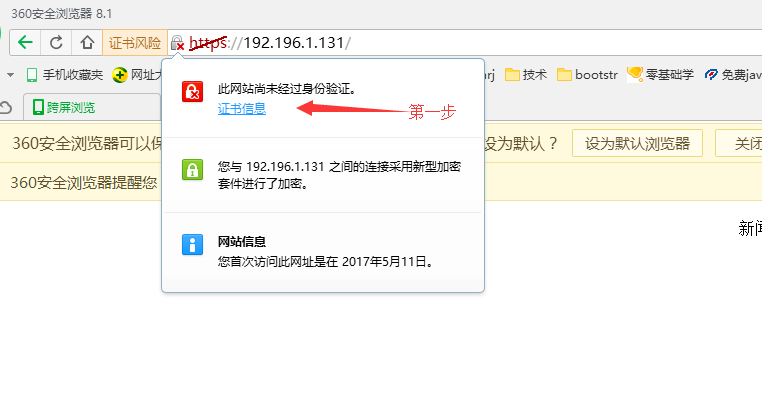
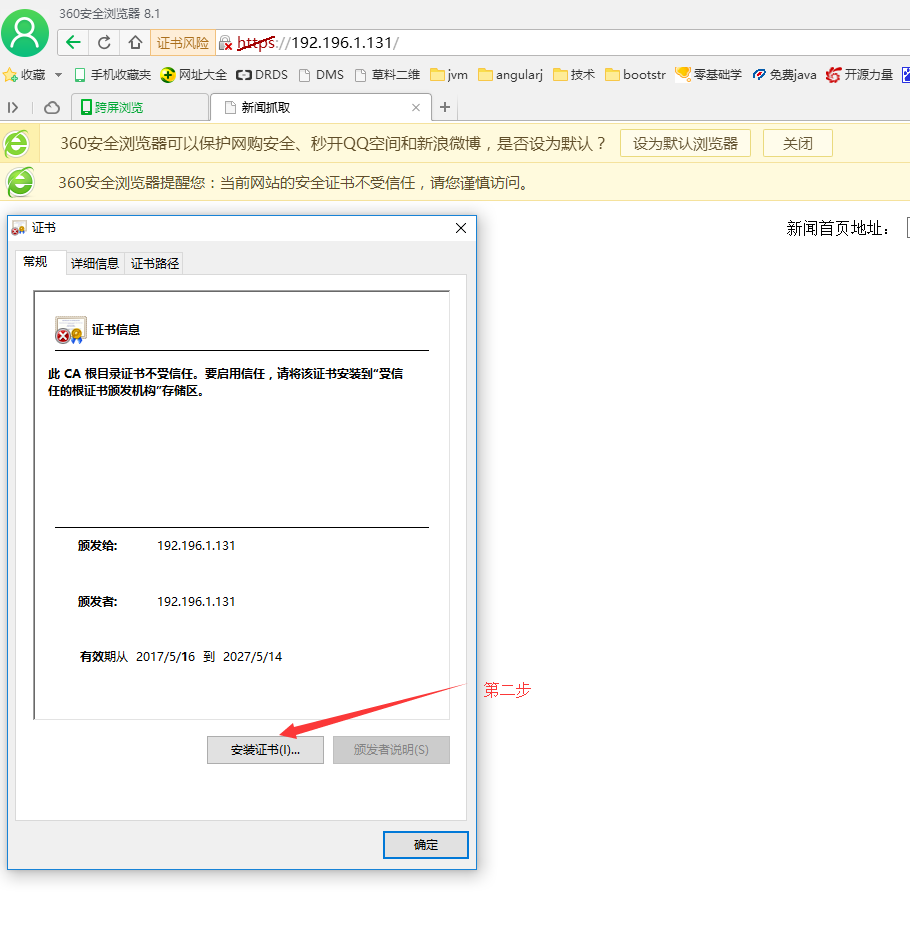

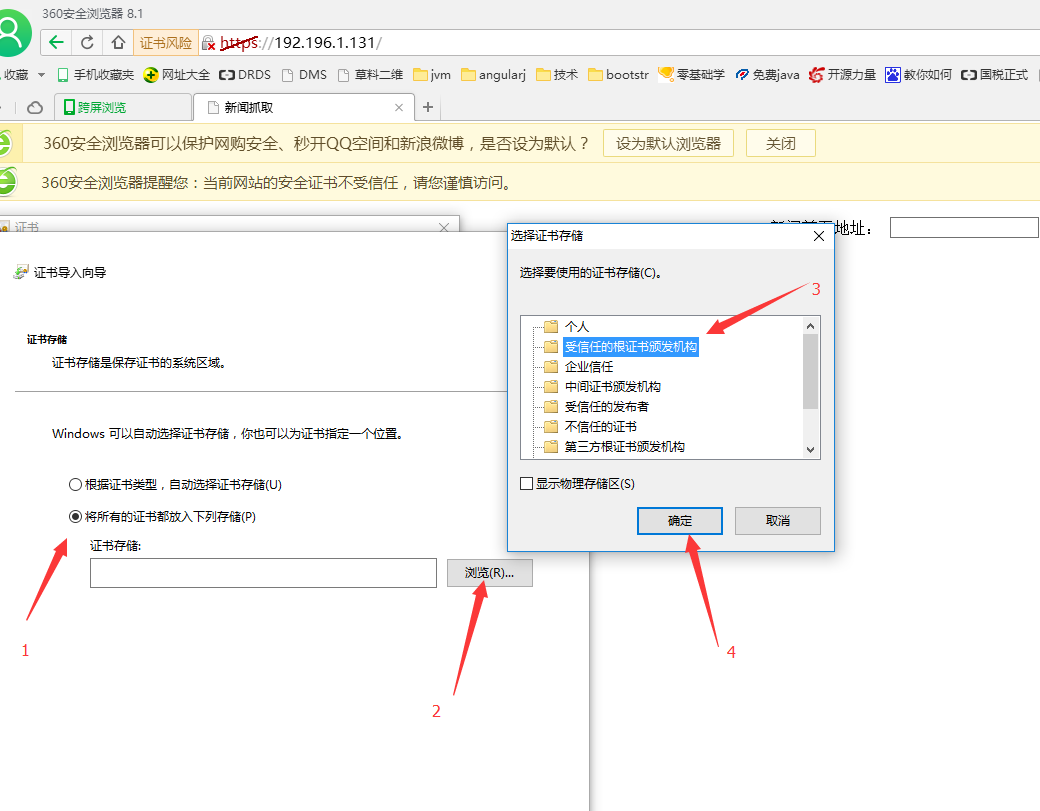
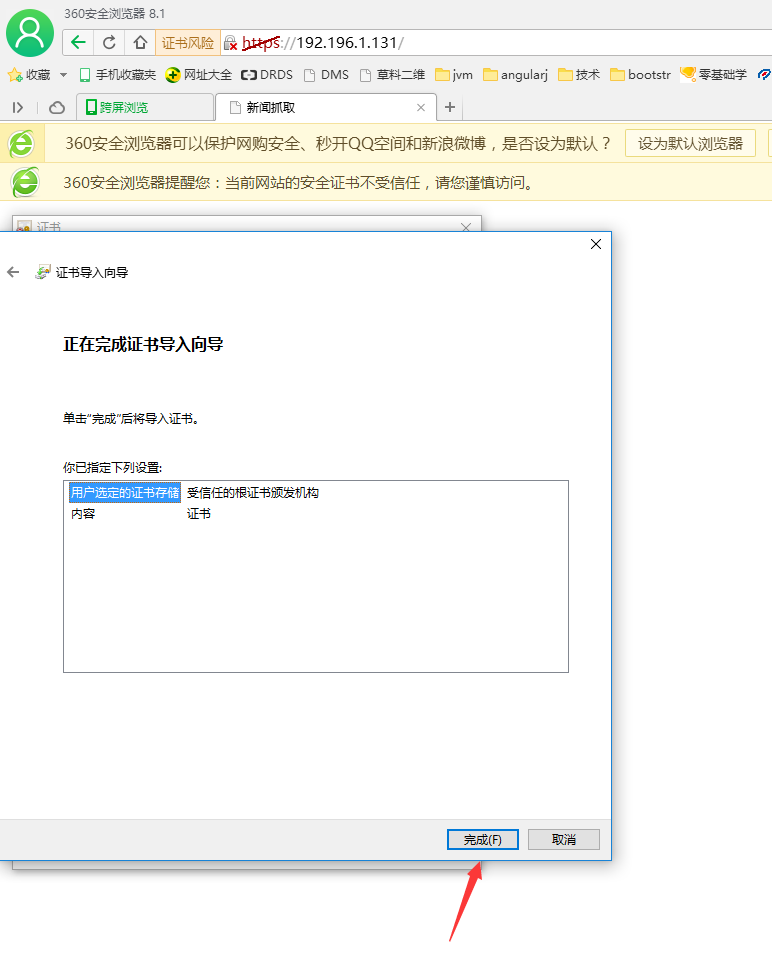
重启浏览器重新访问,一切ok
